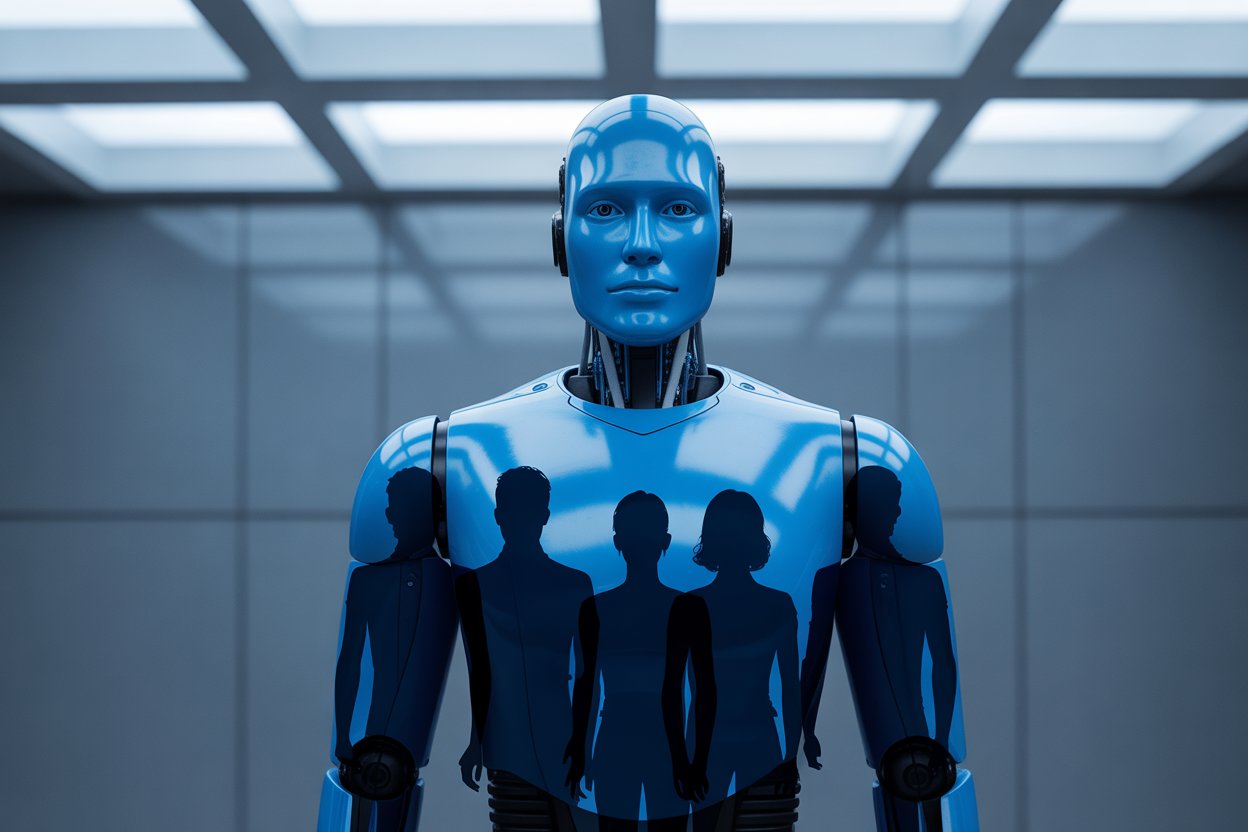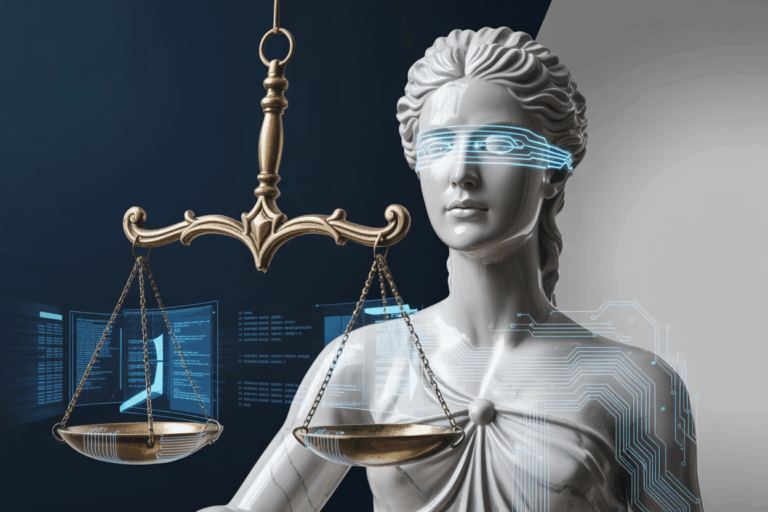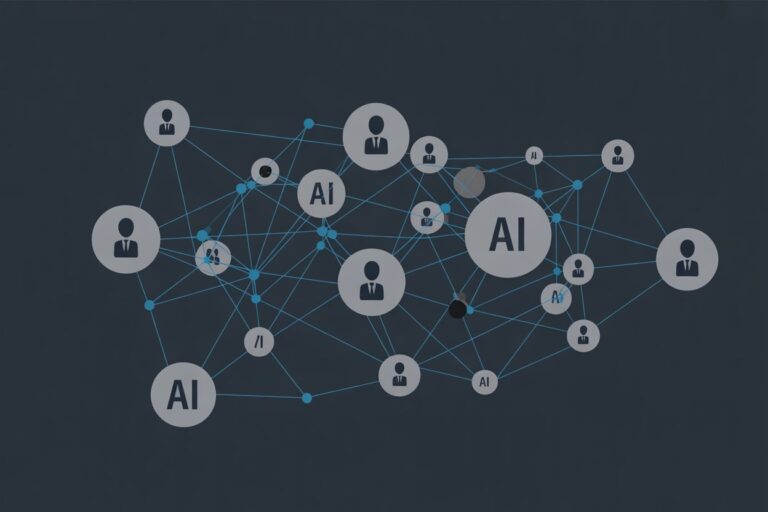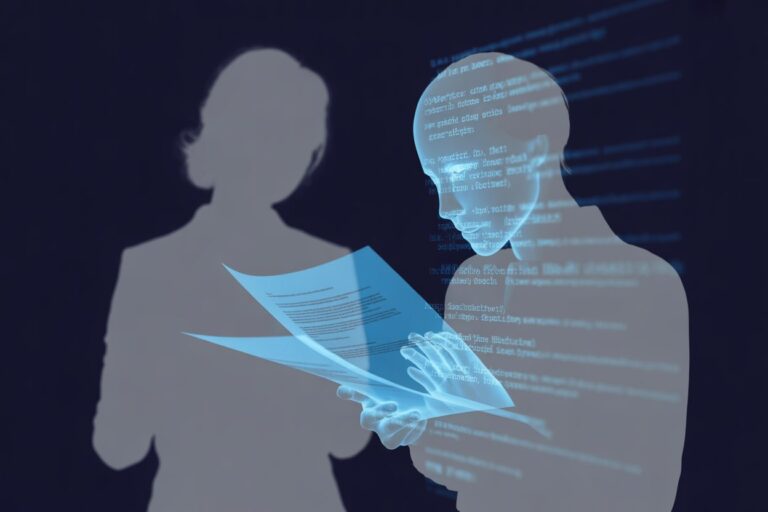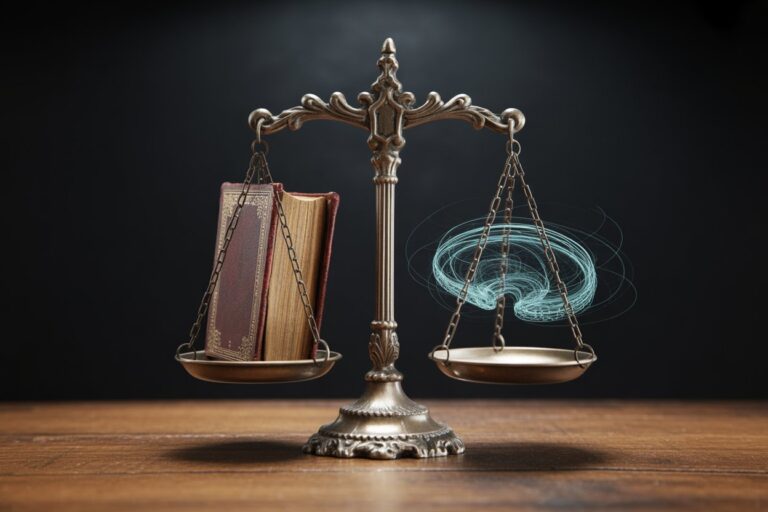The World’s First ‘AI Law Firm’ Just Launched: Here’s the Catch
A human lawyer signs everything. The AI can’t cite case law. Clients approve each step. The robot lawyer revolution? Still human-supervised.
The World’s First AI Law Firm (With Asterisks)
In May 2025, the UK’s Solicitors Regulation Authority made headlines by approving Garfield Law, billing it as “the first AI-driven law firm” authorized to provide regulated legal services. The five-employee startup, founded by commercial litigator Philip Young and quantum physicist Daniel Long, uses generative AI to handle small claims debt recovery. Services range from polite chasing letters (£2) to formal court filings and trial preparation for debts up to £10,000.
Media coverage was breathless. The Financial Times announced the arrival of AI lawyers. Industry publications declared a “landmark moment.” But buried in the regulatory approval and interviews with the founders was a critical detail: Garfield Law isn’t actually AI-only. Philip Young, a licensed solicitor, remains personally accountable for every output. The system can’t cite case law (too high a risk for AI hallucinations). Clients must approve each step. And Young himself checks all outputs during the initial launch phase.
So what does Garfield Law actually prove? That AI-driven legal services are possible, but only within carefully supervised guardrails that keep humans firmly in the loop.
What Garfield Does (and Doesn’t Do)
Garfield’s platform guides small businesses through England’s small claims process. It reads invoices and contracts, verifies claim validity, checks limitation periods, searches Companies House for debtor solvency, generates pre-action letters compliant with Civil Procedure Rules, drafts claim forms, handles defences and counterclaims, prepares trial bundles, and assists with settlement negotiations.
What it deliberately avoids: citing case law. The system uses a hybrid approach combining an enterprise-grade large language model with structured expert systems. Essentially, it codifies the procedural steps a good litigation firm would follow. But legal research, particularly identifying and applying precedent, remains off-limits due to the well-documented problem of AI hallucinations.
Young told the Law Gazette that the system targets a market gap: low-value claims that traditional firms won’t touch. “It’ll remove a lot of the lower-value, often repetitive, administrative work in each case that has to be done but is time-intensive and hence costly for clients.” The target customers include both self-represented litigants and high street law firms looking to automate routine processes.
Why Regulators Said Yes (With Conditions)
The SRA didn’t rubber-stamp Garfield’s application. According to the regulator’s announcement, it engaged extensively with the founders to ensure compliance with professional rules. The agency sought reassurance on quality-checking processes, client confidentiality protocols, conflict-of-interest safeguards, and hallucination risk management.
Most importantly, the SRA insisted on human accountability. Named solicitors (in this case, Young as the Compliance Officer for Legal Practice) remain ultimately responsible for the firm’s outputs and professional standards. The firm must carry professional indemnity insurance. If something goes wrong, Young faces disciplinary action, not the algorithm.
SRA Chief Executive Paul Philip called it “a landmark moment” but emphasized the conditions: “Any new law firm comes with potential risks, but the risks around an AI-driven law firm are novel. We have worked closely with this firm to make sure it can meet our rules and all the appropriate protections are in place.”
The regulator also noted it would “be monitoring progress of this new model closely” as other AI-driven firms inevitably seek approval.
The American Parallel That Didn’t Happen
No U.S. jurisdiction has authorized anything comparable. State bar authorities remain committed to the requirement that licensed attorneys supervise legal work and take responsibility for client matters. The American Bar Association’s Model Rule 1.1, Comment 8, defines technological competence as part of a lawyer’s duty, but recent ethics opinions emphasize human oversight rather than automation.
The cautious U.S. approach stems partly from high-profile failures. In the 2023 Mata v. Avianca case, New York attorneys submitted a brief citing six cases fabricated by ChatGPT. The court sanctioned both lawyers, ordered them to pay $5,000, and required them to notify their client and the judges falsely named as authors of the fake opinions. The incident became a cautionary tale cited in bar opinions nationwide.
More recently, DoNotPay, which marketed itself as “the world’s first robot lawyer,” faced Federal Trade Commission enforcement action in 2024. The FTC found the company made false claims about its AI’s capabilities and didn’t conduct adequate testing. DoNotPay agreed to pay $193,000 and notify subscribers about service limitations. The company also faced class-action lawsuits alleging it practiced law without a license and delivered substandard work.
Multiple state bars, including Florida and the District of Columbia, have since issued guidance reinforcing that lawyers cannot delegate judgment to AI systems and must verify all outputs. Federal judges in some districts now require attorneys to certify whether and how AI was used in filings.
Why “AI-Only” Remains a Misnomer
Legal tech observers have pushed back on describing Garfield as truly “AI-only.” Crispin Passmore, a consultant who previously led regulatory reform at the SRA, argues that every law firm now uses AI through standard Microsoft Office tools. “It’s good to celebrate anyone moving things forward, but let’s not pretend anything is unique that isn’t,” he told Legal IT Insider.
Jenifer Swallow, former CEO of LawtechUK, notes: “This is a new law firm that has been launched to take care of money claims and has deployed technology to do that. It’s more accurate to say the SRA has regulated an ‘AI-powered’ law firm.” She adds that under current legislation, “the SRA cannot authorise AI to deliver legal advice.”
The distinction matters because AI lacks legal personality. Clients contract with entities or individuals who can be held accountable. When disputes arise, courts need a human defendant. Insurance carriers need a professional to underwrite. Bar associations need a licensee to discipline. Algorithms can’t be sued, sanctioned, or struck off the roll.
The Access to Justice Argument
Proponents of AI-driven legal services emphasize a more urgent concern than innovation for its own sake: access to justice. Small businesses across the UK lose billions annually to unpaid invoices, but traditional legal fees make professional debt recovery uneconomical for claims under £10,000. Litigants in person clog small claims courts with poorly drafted filings. The justice gap is real and growing.
Lord Justice Birss, Deputy Head of Civil Justice, praised platforms like Garfield at a Civil Justice Council forum, saying they are “absolutely at the core of what we can do for access to justice.” The argument resonates: if AI can provide affordable, competent legal assistance under appropriate supervision, should regulators block it on principle?
This access-to-justice framing may prove persuasive in other jurisdictions. Utah’s regulatory sandbox already permits controlled experiments with nontraditional legal service providers. Arizona’s Alternative Business Structure program, which allows nonlawyer ownership of law firms, has approved over 100 entities since 2021 and continues to expand. Other states including Washington, Minnesota, and Indiana are watching closely. The question is whether the public benefit of expanded access outweighs the professional risk of reducing oversight.
What Would True AI-Only Practice Require?
For genuinely autonomous legal practice, systems operating without lawyer supervision, several structural changes would be necessary. Legislatures would need to redefine unauthorized practice of law to permit AI agents. Insurance markets would need frameworks for underwriting algorithmic risk without individual professional liability. Courts would need protocols for authenticating AI-generated filings and managing discovery of training data and decision logic.
Most fundamentally, legal systems would need mechanisms for accountability when AI makes errors. Who compensates the client? Who faces sanctions for ethical violations? Who corrects the precedent if an AI-written brief misleads a court? These aren’t just regulatory puzzles; they’re questions about the rule of law and the administration of justice.
The European Union’s AI Act, which classifies legal AI systems as high-risk and mandates transparency and human oversight, suggests that international regulatory frameworks are moving toward mandatory supervision rather than full autonomy.
The Liability Question No One Has Answered
Malpractice insurers are watching these developments closely. While most carriers haven’t yet made AI competence a formal underwriting requirement, several now include questions about AI use in applications and offer risk management guidance. Some provide premium discounts for firms with documented AI training protocols and verification procedures.
But the harder question remains unanswered: what happens when AI makes a mistake that a reasonable lawyer wouldn’t have made? If an algorithm misses a filing deadline, misapplies a statute, or fails to identify a conflict of interest, does the supervising attorney bear full responsibility? What if the attorney reasonably relied on a system that had performed accurately thousands of times before?
Courts haven’t yet established whether “I relied on AI” constitutes a defense, mitigation, or aggravating factor in malpractice or disciplinary proceedings. Until that case law develops, risk-averse firms will maintain conservative supervision ratios.
What Comes Next: Three Scenarios
Garfield Law’s approval signals where AI in legal practice is headed, and it’s not toward full automation. Three paths look increasingly likely:
Supervised AI practice. Law firms like Garfield will proliferate, handling high-volume, low-complexity work under attorney supervision. Lawyers shift from drafting to reviewing, supervising, and taking responsibility. Junior associate work transforms from document production to quality control and client communication. Large firms have already moved in this direction. Cleary Gottlieb’s 2025 acquisition of Springbok AI brought an entire team of data scientists and AI engineers in-house to build custom tools.
Narrow-scope AI services. Platforms targeting specific, routine tasks (document assembly, compliance checks, contract review) will operate with minimal human involvement but clear disclosure of limitations. Think TurboTax for law: algorithmic assistance with human escalation when complexity exceeds the system’s capability. These services may be offered by non-law-firm entities, skirting unauthorized practice rules by staying within carefully defined boundaries.
Hybrid models with tiered supervision. Some services may use non-lawyer professionals for supervision instead of attorneys, particularly in jurisdictions experimenting with regulatory reform. Washington State’s Limited License Legal Technician program, though now suspended, demonstrated demand for mid-tier legal assistance. AI could enable similar models at scale, with algorithms handling routine tasks and paraprofessionals managing exceptions.
International Experiments to Watch
Other jurisdictions aren’t waiting for consensus. The Singapore Academy of Law has integrated legal technology into bar qualification requirements. Cambridge University now includes AI ethics and law modules in its legal education. Some civil law jurisdictions, where legal practice is less centered on individual lawyer accountability, may prove more receptive to AI-driven services than common law systems.
The question is whether regulatory arbitrage emerges: clients seeking AI services from jurisdictions with lighter oversight, or firms incorporating in permissive markets to serve global clients. Cross-border legal services regulation, already complex, becomes exponentially more so when algorithms enter the equation.
What Clients Should Demand Now
Clients hiring firms that use AI (which increasingly means all firms) should ask specific questions: Which tasks are performed by AI versus humans? What verification processes are in place? How is client data used in AI training? What happens if the AI makes an error? Who carries liability insurance, and does it cover AI-related claims? Has the responsible attorney personally validated the AI’s work in this matter?
Corporate legal departments are already adding AI clauses to outside counsel guidelines, requiring disclosure of AI use, verification protocols, and indemnification for AI-related errors. Sophisticated buyers are treating AI as they would any other outsourced service: with detailed contracts, service-level agreements, and audit rights.
Augmentation, Not Autonomy
Garfield Law’s approval is significant, but not for the reasons the headlines suggest. It doesn’t herald the arrival of robot lawyers. It confirms that AI can handle structured, routine legal tasks under human supervision, particularly in areas where traditional legal services are unaffordable or unavailable.
The model is augmentation, not replacement. Algorithms draft; lawyers review. Systems suggest; professionals decide. AI handles volume; humans manage exceptions. This division of labor may radically reshape legal practice. There will be fewer junior associates doing first drafts, more mid-level lawyers doing quality control, and partners focusing on strategy and judgment rather than document production.
But the fundamental architecture of legal services remains intact with human professionals owing duties to clients and courts, taking responsibility for outcomes, and facing consequences for failures. Until someone solves the accountability problem, “AI-only” will remain an aspirational term rather than a realized model.
The real question isn’t whether AI will replace lawyers. It’s whether the profession will adapt quickly enough to make AI-augmented services accessible to the millions who currently can’t afford legal help at all. Garfield Law suggests the answer may be yes, as long as humans stay in the loop.
My Take
Soon, micro-firms will pop up doing exactly as Garfield Law does: AI handles the grind, humans review and sign off. It’s the legal version of productized services. Not bespoke legal advice for $500 an hour, but repeatable workflows with quality control. People won’t care that an AI drafted it if it works, costs less, and arrives in minutes. Trust follows exposure. The more people use AI, the more they’ll trust it.
As for malpractice insurance, that market will catch up fast. Once these systems process enough cases, they’ll have all the stats insurers need. Error rates will drop, predictability will rise, and underwriters will make a fortune collecting premiums based on yesterday’s risks.
This is production law: scalable, data-driven, and soon ubiquitous. The upside is enormous. Millions priced out of legal help will finally get access—whether through affordable AI-assisted services or AI-aided self-representation. It’s not the end of lawyers; it’s lawyers industrialized.
Give it a few years and nobody will blink when a “law firm” has a staff of three humans and a dozen fine-tuned GPTs. The legal industry won’t be automated overnight, but it’s now officially on the assembly line.
Sources
- Solicitors Regulation Authority – SRA Approves First AI-Driven Law Firm
- Law Gazette – In Depth: ‘World’s First AI Law Firm’ Garfield Law
- Artificial Lawyer – Is Garfield the ‘1st AI-Driven Law Firm’ A Big Deal?
- AAR Podcast – Garfield Law: Inside the World’s First AI-Native Law Firm
- Law Society of Scotland – Authorising the Algorithm
- Legal IT Insider – Garfield.Law: AI Hype or Access to Justice Hope?
- American Bar Association – Model Rule 1.1, Comment 8
- Association of Corporate Counsel – Mata v. Avianca: Practical Lessons
- Federal Trade Commission – DoNotPay Enforcement Action
- ABA Journal – DoNotPay Settles FTC Claims
- Florida Bar – Ethics Opinion 24-1
- D.C. Bar – Ethics Opinion 388
- European Commission – AI Act
- Utah Office of Legal Services Innovation
- IAALS – Arizona Alternative Business Structure Program Milestone
- ABA Journal – Cleary Gottlieb Acquires Springbok AI
- Singapore Academy of Law
- University of Cambridge – AI Ethics and Law Programme
- Washington State Bar Association
Disclosure: This article was prepared for educational and informational purposes only. It does not constitute legal advice and should not be relied upon as such. All sources cited are publicly accessible. Readers should consult legal or compliance counsel for guidance tailored to their circumstances.

